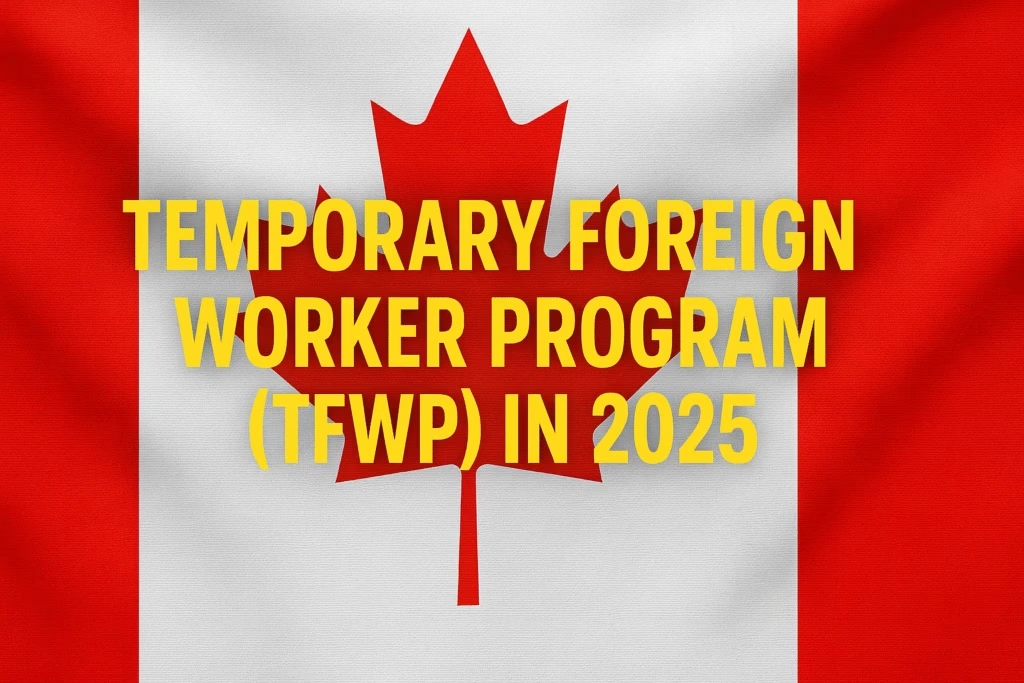Canada has always been a popular destination for workers from around the world. But even with a big population and many skilled workers, there are still jobs that can’t be filled easily by Canadians alone. That’s where the Temporary Foreign Worker Program (TFWP) comes in.
In this article, I’ll walk you through what the TFWP is, why it’s important, who can use it, and how it works — all in plain language, so you can understand the ins and outs of this program in 2025.
What Exactly is the Temporary Foreign Worker Program?
The Temporary Foreign Worker Program is run by the Canadian government to help employers fill job vacancies when they can’t find local workers. For example, farms, restaurants, construction companies, and healthcare providers sometimes need workers for a short period, and the TFWP makes it legal for them to hire people from other countries temporarily.

Think of it as a bridge — it helps businesses keep running smoothly when there aren’t enough Canadian workers available for certain jobs.
Why Does Canada Use This Program?
You might wonder why Canada can’t just rely on its own workforce. Well, there are a few reasons:
- Canada’s population is aging, which means fewer people are entering the workforce.
- Some industries have specialized jobs that are hard to fill locally.
- Sometimes the work is seasonal or temporary, making it hard to hire permanent staff.
So, the TFWP helps by allowing employers to bring in temporary workers from abroad to cover these shortages — which keeps businesses healthy and supports the economy.
How Does the Program Work?
Here’s a simple step-by-step breakdown:
Step 1: Employer Applies for Permission (LMIA)
Before hiring a foreign worker, Canadian employers must get something called a Labor Market Impact Assessment (LMIA). This is basically official proof that they tried to find Canadian workers first but couldn’t fill the job.
Step 2: Worker Applies for a Work Permit
Once the LMIA is approved, the foreign worker can apply for a work permit. This document lets them come to Canada and work legally for a specific employer and time period.
Step 3: Worker Arrives and Works in Canada
After the work permit is granted, the worker travels to Canada and starts the job under the agreed terms.
- The Future of Electric Vehicles in Canada
- Why More Canadians Are Choosing Solar Energy
- Top 10 Cars for Canadians in 2025 New
Who Can Take Part in the Program?
There are two sides here:
- Employers: Businesses that need workers but can’t find Canadians to fill those roles. They apply for the LMIA and must follow rules to protect workers.
- Foreign Workers: People from other countries who have a job offer in Canada and want to work temporarily.
What Jobs Are Included?
The TFWP covers a wide range of jobs — from farm labor and hospitality work to tech positions and healthcare. Some jobs are high-demand and get priority in processing applications.
What Are the Benefits?
- Businesses get the workers they need.
- Workers gain valuable international work experience.
- Canada’s economy stays strong by filling important roles.
- Some workers may even have a path to become permanent residents later on.
What Are Some Challenges?
The government has put rules in place to make sure temporary foreign workers are treated fairly. Employers must provide good working conditions and pay fair wages. There have been some issues in the past with worker exploitation, so the program is constantly being improved.
Tips for Employers and Workers
- Employers should keep clear records showing they tried to hire Canadians first.
- Workers should ensure their documents are complete and truthful.
- Both should be aware of the rights and responsibilities involved.
Final Thoughts
The Temporary Foreign Worker Program is an important part of Canada’s labor system. It helps businesses stay competitive while giving workers from around the world the chance to experience life and work in Canada.
If you’re an employer or worker thinking about the TFWP, it’s crucial to stay updated on rules and make sure you follow the process carefully. Doing so will make your experience smoother and more successful.
For more information on working in Canada or related immigration programs, check back regularly for updates and helpful guides!